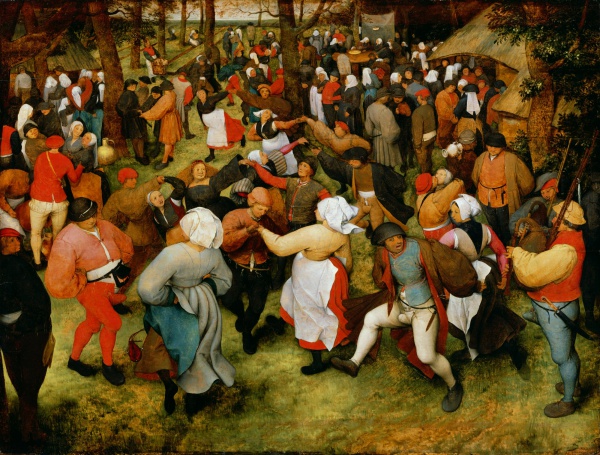Facts About The Wedding Dance
"The Wedding Dance" painted by Pieter Bruegel the Elder in 1566, is a vibrant artwork currently housed at the Detroit Institute of Arts in Michigan. Discovered in England in 1930, this masterpiece found its way to Detroit soon after. It is believed to be part of a trio of wedding-themed paintings by Bruegel, alongside "The Peasant Wedding" and "The Peasant Dance" all created around the same period.
In "The Wedding Dance" 125 guests revel in a wedding celebration, with brides dressed in black and men donning codpieces, both typical of Renaissance fashion. The painting captures the lively and, at times, voyeuristic nature of the celebration, while also critiquing the excesses and boisterous behavior of the peasant class. During this period, dancing was often frowned upon by authorities and the church, adding another layer of social commentary to the work.
Bruegel's "The Wedding Dance" was completed in 1566 and was thought lost until its rediscovery in 1930. This painting, along with "The Peasant Wedding" and "The Peasant Dance" explores themes of gluttony and the abandonment of religious values, offering an anthropological and moral critique of the time.
The artwork portrays a chaotic outdoor celebration filled with dancers in period attire, engaging in rustic buffoonery. It challenges the social norms of the 16th century by presenting a comical yet critical view of lower-class behavior. Dance, seen as a social evil back then, symbolizes a form of liberation for the peasants, allowing them to break free from societal constraints.
"The Wedding Dance" is part of a broader series on the Seven Deadly Sins and Virtues, highlighting moral themes and the perceived dangers of dancing to the human soul. It portrays the peasantry as wild and unruly, reflecting the moral disapproval of dancing by religious and civil authorities during that era.

 Mexico
Mexico